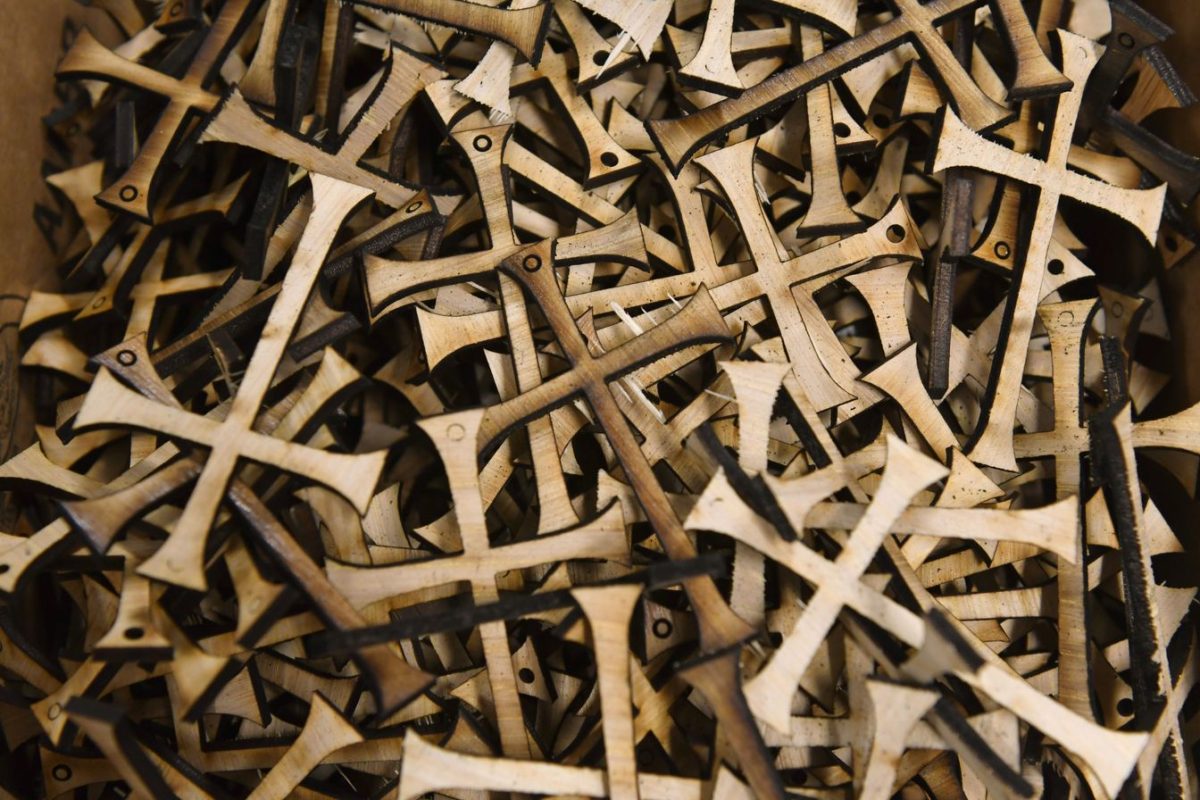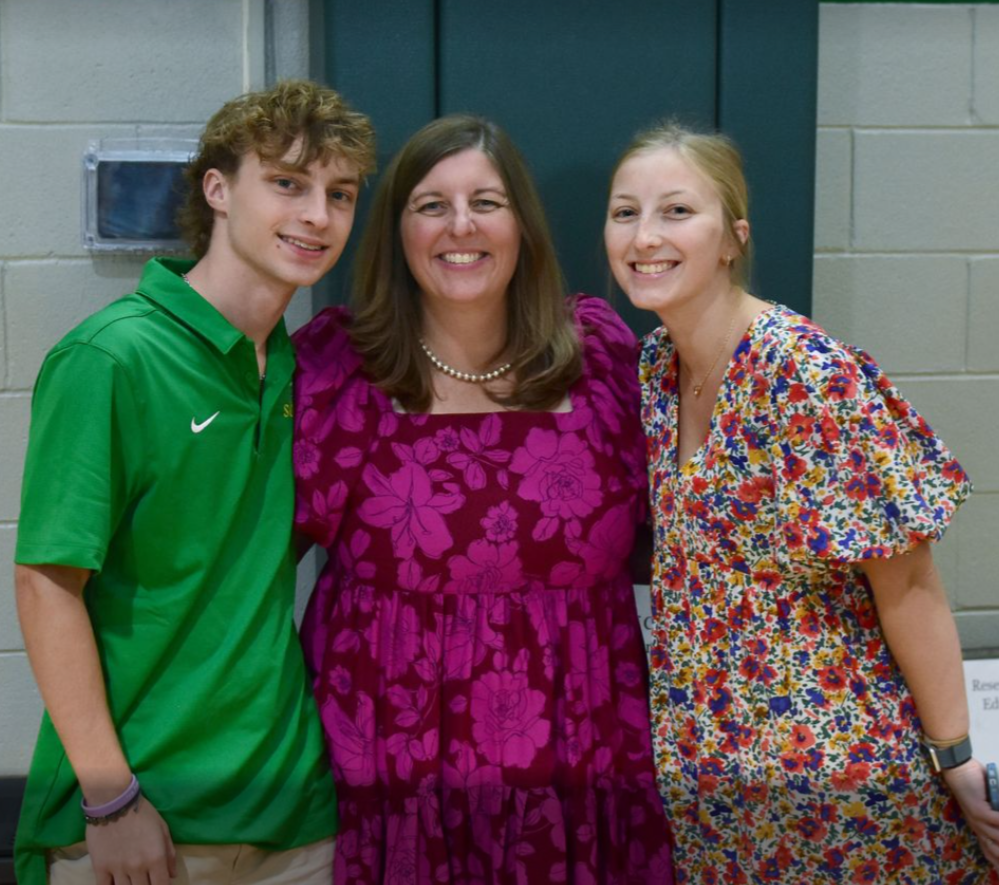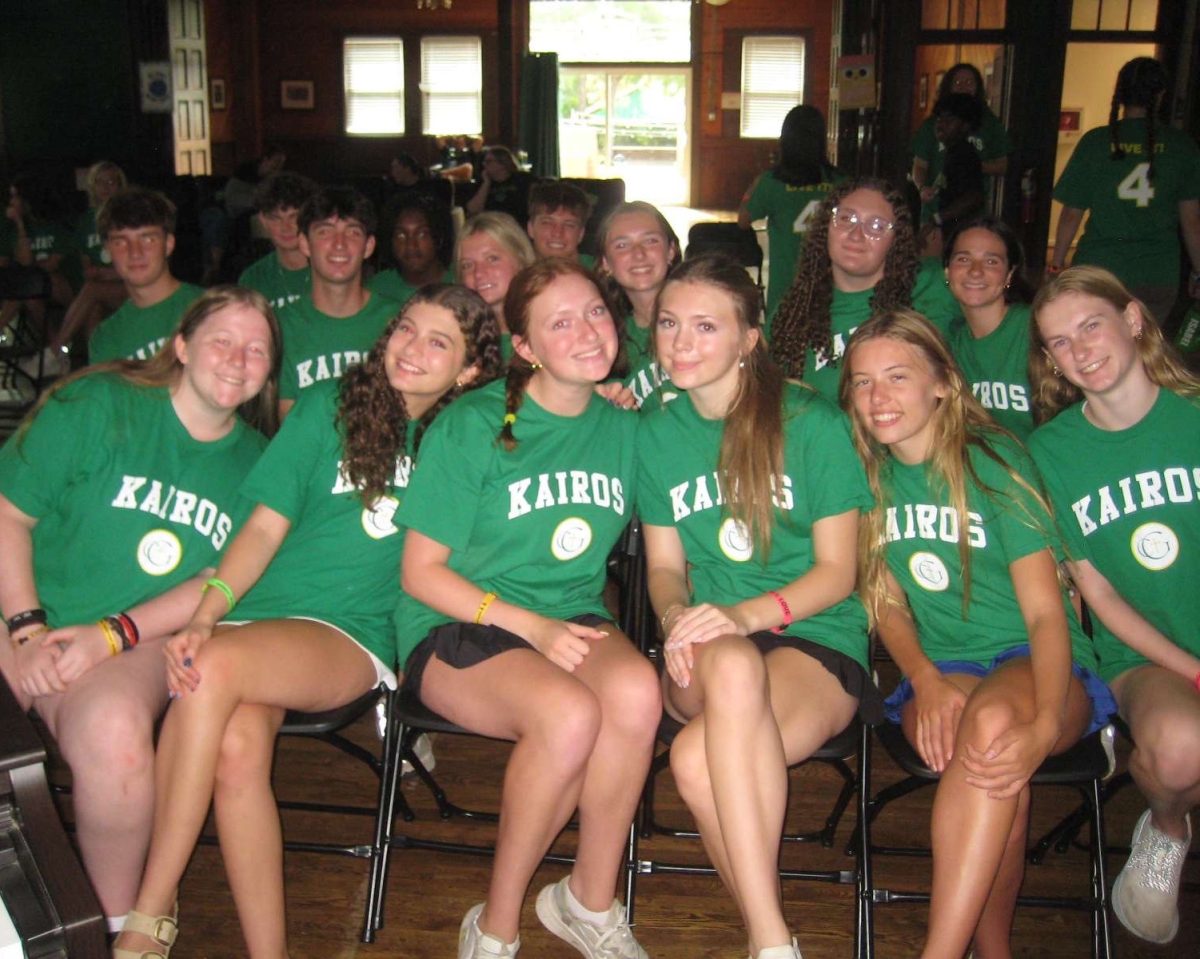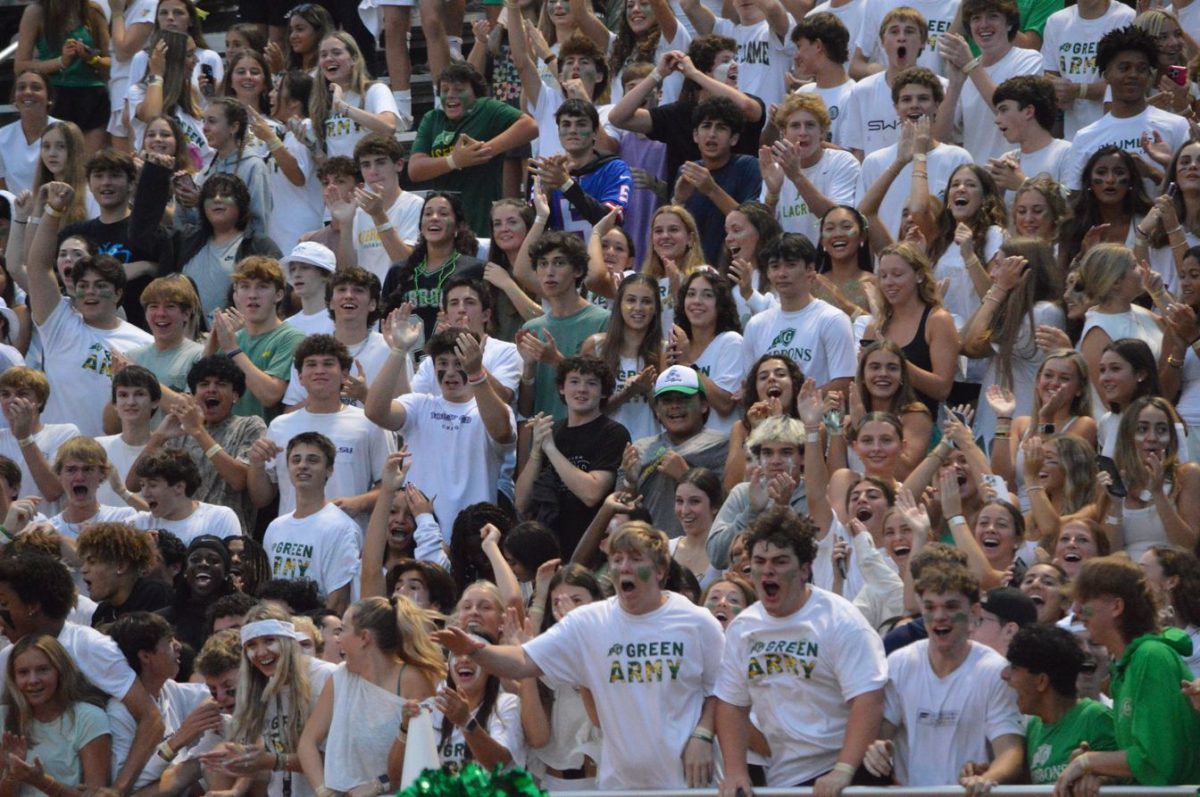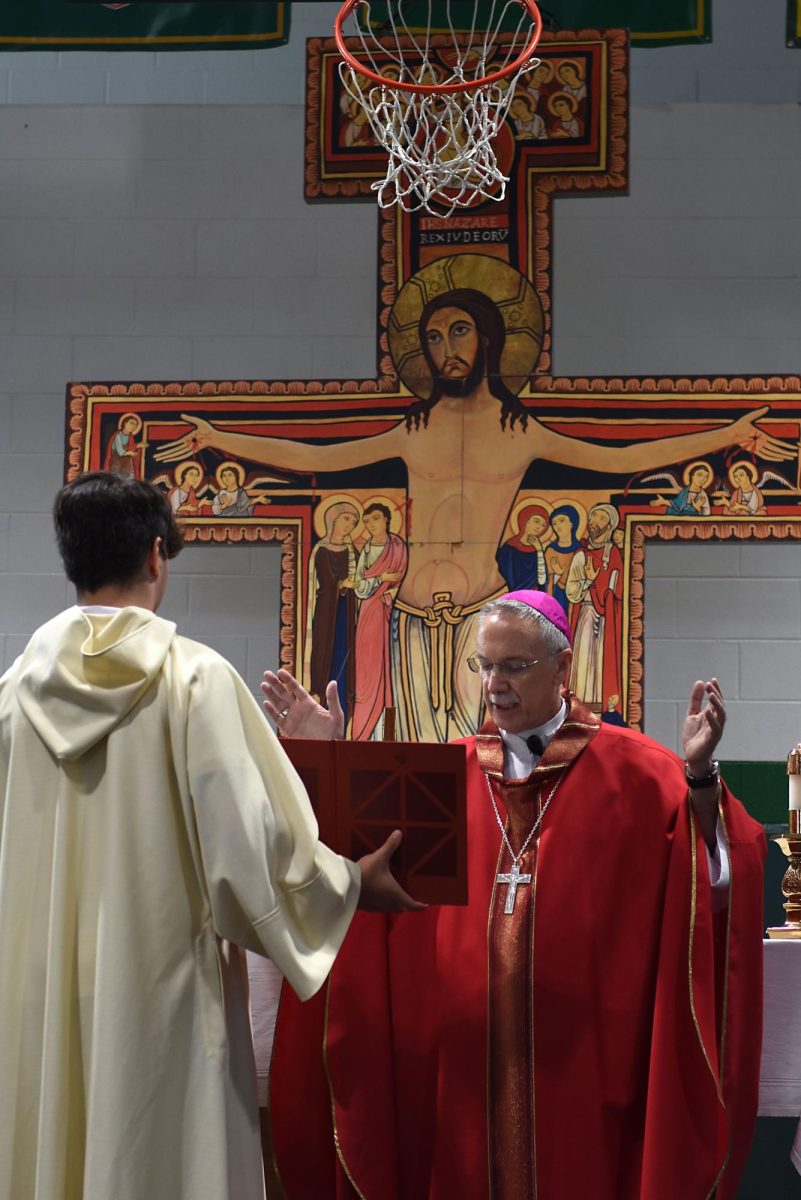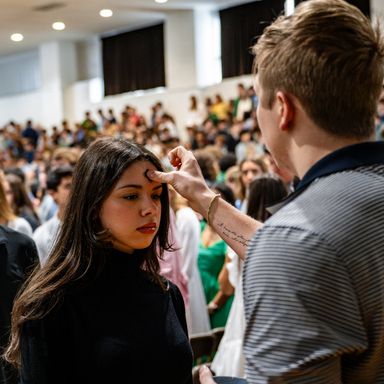History in Faith and Partnerships
Cardinal Gibbons has a rich and meaningful history in community and faith. Several different groups and Catholic organizations have played a crucial role in the founding and administration of Gibbons’ spiritual life as well as academics.
The Dominican Sisters of Newburgh, N.Y., initially opened the school’s doors. Along with three other religious organizations, the Dominican Sisters are honored in one of the four main stairwells. Up until 1971, the Dominican Sisters were solely advocates for education. They then made it a mission to primarily focus on social justice.
In 1972, a blessed partnership between the Sisters of Notre Dame and Cardinal Gibbons began. During this time, Sister Mary Teresita took up the role of principal.
Throughout the years, the Franciscan Brothers of Brooklyn have also played vital roles in the school’s foundation of faith. They officially served our school from 1996-2006.
Symbols of Faith
The Grotto
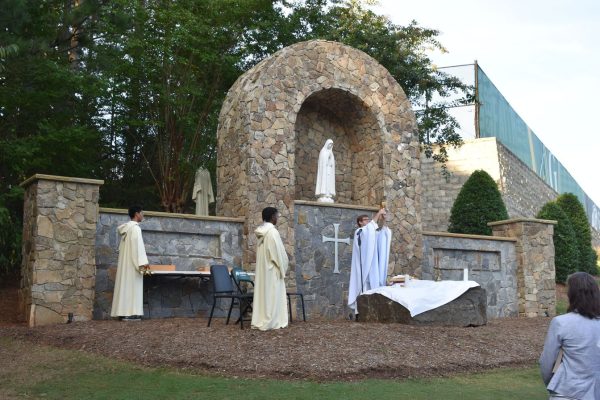
Built on Jun. 12, 2021, the Grotto has been a notable and comforting monument in the Gibbons community. It was funded by an anonymous donor. On the day that the Grotto finished construction, Bishop Luis Zarama anointed the altar.
Mary, the Queen of All Saints, is a beautiful figure the community of Cardinal Gibbons can look up to and strive to embody the characteristics of. Adding the statue of Mary in the Grotto reminds people to keep Her present in their lives and to allow Her to help them become more like Her Son, Jesus Christ.
“The Statue of Mary holds such a prominent place in the Grotto,” said Mr. Meyerl (class of 1982). “The Grotto is in honor not only of the Blessed Mother, but in gratitude for the service of the Sisters of Notre Dame who served here for a number of years.”
Stations of the Cross Garden
The Stations of the Cross Garden was originally designed by the Class of 2009 to honor two students who tragically passed away in a car accident. The class wanted to remember the students, Brandon James Allen and Thomas Austin Cope, who departed too soon.
From the weightlifting team removing and replanting the poles to other students and educators who wholeheartedly insisted on being a part of the designing and construction process, the community brought the project to life and introduced a whole other meaning.
Part of the design process was finding new stations.
When the Saint Francis Parish was rebuilt, the church was more than happy to provide their old stations to Gibbons. Mr. DeLaRosa has been a long-time parishioner of the Saint Francis of Assisi Church in Raleigh and was delighted to take charge of the restoration and reconstruction of the Stations of the Cross Garden positioned near the theology hallway.
Saint Francis’ original stations were stored and forgotten until Mr. DeLaRosa’s father addressed the pastor. The team restored and renewed them to be able to withstand the elements and last for years to come.
“It was a labor of love for all of us,” said Mr. DeLaRosa. “It took a year. Our goal was to have it done by Lent that year, and we did have it done. And we had a blessing service.”
The garden is a reminder of the precious lives lost too soon that inspired the garden as well as the close relationship Gibbons has with Saint Francis. This sacred space brings students and educators together in honoring our past as well as striving to deepen our faith in the present and future.
San Damiano Cross
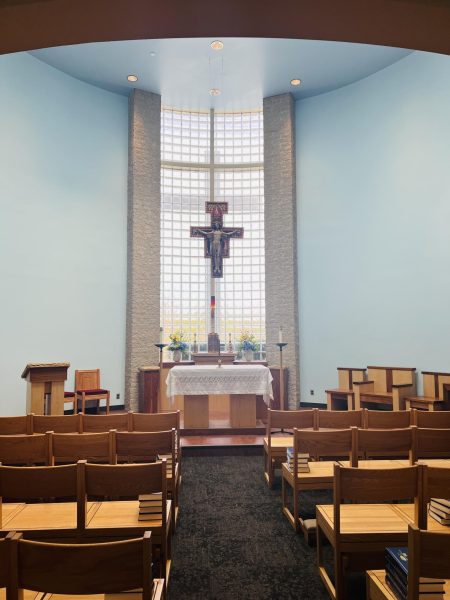
The San Damiano Cross, which hangs in our Queen of All Saints Chapel, is also a key element of the Catholic Faith with a beautiful history and meaning.
Eight hundred years ago, Saint Francis was just a man; he was not yet a saint. He heard Jesus calling to him while praying at a church in Italy. The Jesus talking to him was the same one on the San Damiano Cross that was hanging prominently from the church. He heard Jesus say, “Rebuild my Church.” Hearing Jesus speak to him from the San Damiano Cross was the beginning of his calling to start the Franciscan Church. From then on, he became a Saint, a true follower of Christ, and a leader.
“The San Damiano Cross is prominent within the Franciscan charism, tradition, and that is our way of honoring and showing our gratitude for the service that the Franciscan Brothers of Brooklyn provided our campus,” explained Mr. Meyerl. “And we are here on this campus because of their leadership at that time. A lot of some of the more prominent sacramentals on our campus, Mary’s Statue, San Damiano Cross, are all really signs of gratitude to groups that have served at one time or another.”
The San Damiano Cross reminds students and educators of Gibbons of our history. They can strive to follow in the footsteps of Saint Francis and advocate for our faith. This cross is in classrooms, which prompts students to remember the purpose of their learning and reason for their goals. We live for God and should strive to embody the characteristics of Saint Francis.
Our Chapel
Our chapel is an inspiration and a place of comfort to the Gibbons community.
“(The chapel is) the heart of everything we do as a school and especially as a spiritual life team,” Father Luke said. “The life that we have at Gibbons, the reason why we do everything we do, hopefully, is to imitate and be like Christ and to answer His invitation to become saints; to be the best version we could be. And it is that strength and that truth that you find every time you go to Mass or you go to prayer in the chapel.”
Even our chapel was strategically designed. Its circular shape can be interpreted as God’s arms wrapping Himself around us. It was an intentional design to show that the chapel is the heart of God for us. Our chapel provides a place of comfort for Crusaders and families to gather to worship the Lord. We can take heart in knowing that while within the walls of the chapel, we are in God’s presence and His arms lovingly embrace us.
In addition to our Chapel, other gardens and symbols can be found that represent important parts of our school’s history in faith and leadership.
The community of Gibbons has been a culmination of several groups bringing together certain elements to create an ideal community for the Catholic Faith to flourish.
“I would say that everyone is on a journey of faith and so the fact that we have multiple places of prayer and various symbols that lift our minds and hearts to the things of God is all meant to be a support in a person’s journey towards God, towards being a saint, and towards heaven,” Father Luke explained.
Symbols of History
One of the questions in opening the new Cardinal Gibbons campus in August 1999 was how they would be able to properly remember the Western Boulevard campus which was an integral part of our school’s history.
Gibbons wanted to accurately incorporate the historical meanings of the deep-rooted symbols and items into the new campus; they did this through symbolism.
The Crest
When the Gibbons Western Boulevard campus opened in August of 1962, students decided to design a crest that would represent the rebirth of the school and instill firm values in faith. The motto on the crest is “Cum Deo Omnia Possum.” The Latin phrase comes from Matthew 19:26 which reads, “Jesus looked at them and said, ‘For human beings this is impossible, but for God all things are possible.’”
Students wanted to reestablish their Catholic faith and create a new way to invent themselves. “Cum Deo Omnia Possum” reminded students and educators to seek Christ to give them strength and faith.
Today, we can confidently declare that the Lord is our source of strength, and He will guide us and provide for us. Remembering our weaknesses and delighting in them is what makes us susceptible to God doing good works in us. Nothing is greater than the power of God the Father.
Numerous elements from the Western Boulevard campus were preserved and incorporated into the current building.
Western Boulevard Pavilion
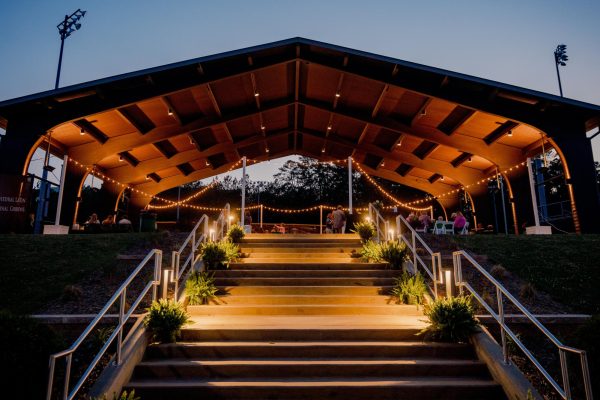
One of those elements is the Western Boulevard Pavilion.
The Father Price Gymnasium at the Western Boulevard campus was a special place for students. Many saw it as the heart and soul of the school. With the transition to the new campus, the community wanted to make sure certain aspects of the gymnasium were preserved in the new building. The school’s current gymnasium carries the same name, and consists of wooden rafters from the old building, honoring the past gymnasium and all it stood for.
“We don’t have just one charism,” said Meyerl. “We are a culmination of a variety of charisms that have impacted and influenced who we are as a Catholic school community.”
The community at Cardinal Gibbons has been a culmination of several groups bringing together certain elements to create an ideal community for the Catholic Faith to flourish. This school has been careful in honoring its rich past and incorporating elements from each aspect into the present community.



